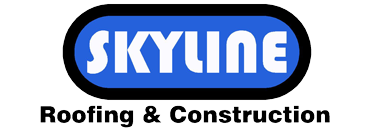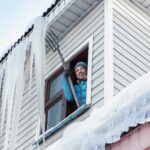
What is Roofing Underlayment?
A new roof requires more than just shingles. It’s a cohesive coordinated system consisting of layered components designed to provide shelter and protection from the elements. Underlayment is a waterproof barrier that prevents water from leaking into your roof decking. The key components of a typical roofing system include the roof deck, underlayment, and roofing material. These materials can include shingles or metal. Other components include, flashing, ventilation, eaves, ridge vents, gutters, and downspouts.
What is Roofing Underlayment?
Roof underlayment is a protective material that is placed between the shingles or metal panels and the roof decking. It is a crucial component of roofing systems, typically made from materials like asphalt-saturated felt. The material could also be synthetic materials such as polyethylene or polypropylene. The underlayment plays a vital role in enhancing the overall performance and longevity of a roof.
What is the Purpose of Roofing Underlayment?
The primary purpose of roofing underlayment is to provide an additional barrier against water infiltration, offering a secondary level of protection in case the outer roofing material fails or is compromised. The type of underlayment used on a roof can make a significant difference in the life span of the roof. The underlayment helps prevent water damage to the roof deck, insulation, and the interior of the structure. Having this protection ensures that any water that penetrates the outer roofing material is directed away from vulnerable areas. Additionally, roof underlayment can contribute to the roof’s resistance against wind-driven rain, ice dams, and other environmental factors, making it an essential element in the construction and maintenance of a durable and weather-resistant roofing system – especially here in the Pacific Northwest where we are prone to lots of rain and wind storms.
What is the Best Underlayment for Metal Roof?
The choice of the best roofing underlayment for a metal roof depends on various factors, including the specific metal roofing material, climate, and local building codes. However, two commonly used types of underlayment for metal roofs are synthetic underlayment and self-adhering bituminous (asphaltic) underlayment.
Synthetic Underlayment: Synthetic underlayment is often made from polypropylene or polyethylene. It is lightweight, resistant to UV exposure, and provides a high level of tear resistance. Synthetic underlayment is particularly suitable for metal roofs because it does not absorb moisture, reducing the risk of corrosion. It also offers good traction for installers during the roof installation process.
Self-Adhering Bituminous Underlayment: This type of underlayment, commonly known as peel-and-stick or self-sealing underlayment, is made of a rubberized asphalt material. It adheres directly to the roof deck and creates a watertight seal around fasteners and penetrations. Self-adhering underlayment is known for its excellent waterproofing properties and is often recommended for metal roofs due to its ability to self-seal around metal roofing screws and other penetrations.
What is the Best Underlayment for a Shingle Roof?
The best type of roofing underlayment for a shingle roof depends on various factors, including roof slope, budget and climate conditions. Two commonly used types of underlayment for shingle roofs are asphalt-saturated felt (felt paper) and synthetic underlayment.
Asphalt-Saturated Felt (Felt Paper): Asphalt-saturated felt has been a traditional choice for roofing underlayment. It is made from a base of organic or inorganic felt paper that is saturated with asphalt to enhance its waterproofing properties. This type of underlayment is known for its affordability and has been used for many years in the roofing industry. It provides a good level of protection against water infiltration and serves as a reliable underlayment for various types of shingle. Felt underlayment comes in different weights of either 15 or 30-pound felt. Thirty-pound felt is more durable and thicker than 15-pound felt. It is less likely to tear and provides superior waterproofing protection. Skyline Roofing uses 30-pound felt in all our shingle roof projects.
Synthetic Underlayment: Synthetic underlayment is a higher quality underlayment than felt and is also more expensive. It is typically not used in shingle roof applications unless the roof pitch is a low slope. It provides more long-term waterproofing than felt and is less prone to wrinkling or tearing during installation.
How to Choose the Right Kind of Roofing Underlayment
When choosing the best underlayment for your metal or shingle roof, it’s essential to consider factors such as the local climate, slope of the roof, price, and the specific shingle or metal material being used. Additionally, adhering to the manufacturer’s recommendations and local building codes is crucial for proper installation and warranty compliance.
Consulting with a roofing professional or the manufacturer of the roofing material is advisable to get specific recommendations based on your roofing system and local conditions. Ultimately, the goal is to choose an underlayment that provides effective waterproofing, durability, and compatibility with the specific requirements of the shingle roofing system.
Trust Skyline Roofing & Construction for Your Roofing Needs
At Skyline Roofing & Construction our roofing professionals always strive to add value to your home or business for the long term by using superior quality underlayments. Contact us today if you are looking for an experienced, licensed roofing contractor to install, repair, or maintain your roof. Skyline Roofing is located in Bellingham, WA and we presently serve Whatcom, Skagit, and Island Counties.
License #SKYLIRC854Q








No Comments
Sorry, the comment form is closed at this time.